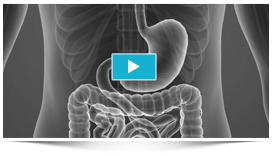Laparoscopic Hernia Surgery
A hernia is a bulge formed when internal organs or tissue pushes through the weakened area of the abdominal wall. Severe complications may occur if an organ or abdominal tissue is trapped in the herniated part of the abdominal wall. Hernia commonly occurs in the groin region and is called an inguinal hernia. Other types of hernia are femoral hernia (below the groin), umbilical hernia (near the navel) and incisional hernia (from previous incisional scars) and hiatal hernia.
Surgical treatment is necessary to avoid the risk of strangulation. Hernias can be treated with laparoscopic surgery or robotic surgery. Open surgical technique involves larger incisions which require long time to heal. The laparoscopic approach is beneficial for treating recurrent hernias. It is a minimal invasive surgery in which your surgeon inserts a laparoscope (a flexible tube with a lighted device and video camera attached at its end) and special instruments through small incisions in the abdominal wall and performs the procedure.
Procedure
The laparoscopic procedure is performed under the effect of general anaesthesia. Your surgeon makes a small incision near the navel to insert a laparoscope and two more incisions on the sides of your abdomen to insert special instruments. Your doctor inflates the abdomen with carbon dioxide gas to clearly view the internal organs while performing the procedure. The protruded sac is pushed back into the abdomen and the weakened part of the abdominal wall is patched with a piece of mesh to strengthen it. The peritoneum (inner lining of the abdomen) is stapled or sutured and the outer abdominal incisions are covered with a surgical dressing.
The laparoscopic approach has several benefits over open surgery. Laparoscopic surgery involves making small incisions compared to one long incision in open surgery. Patients are hospitalised for a shorter period and experience less post-operative pain. The patients recover faster with lesser complications.
But as with any surgery, laparoscopic surgery involves certain risks and complications. The procedure may damage the intestine, spermatic cord in men, blood vessels or nerves. The wound site may become infected or start bleeding.
After the surgery, you may be able to resume work after about two weeks. Resuming jobs which involve strenuous activities or lifting heavy objects may have to be delayed for at least 4 weeks. The pain, soreness and swelling around the incisions subside after a few days. Call you doctor if you experience high fever, severe abdominal pain, and swelling or foul smelling discharge.





